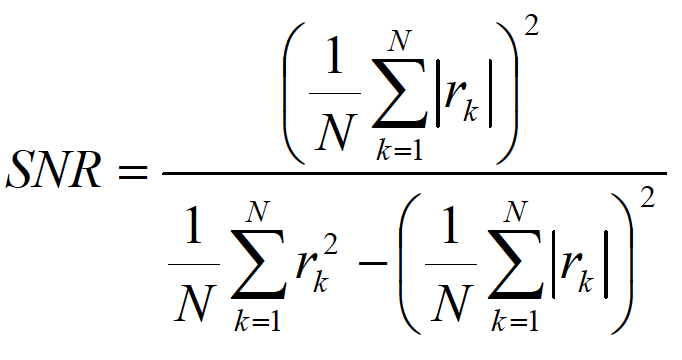| Version 49 (modified by , 10 years ago) ( diff ) |
|---|
LTE Unlicensed (LTE-U)
Introduction
Long-Term Evolution (LTE) is the latest high-speed data standard of wireless communication. It is usually known as 4G LTE in cellphone or mobile devices.
LTE in Unlicensed (LTE-U) operates in open/unlicensed spectrum, such as in the 5GHz band. It aggregates with the licensed LTE in order to increase the data rate of the Advanced LTE system (unlicensed and licensed LTE system).
With the massive growth in data traffic and mobile devices, it is necessary to expand the mobile network system. While the licensed spectrum is limited in amount, the possible solution should be using the available unlicensed spectrum, even it might be conflict with the exist network, such as Wi-Fi.
It is recently proposed by Qualcomm, Ericsson, and Verizon that LTE-U should be utilize in unlicensed spectrum on the 5725-5850 MHz band so that it could be a "nice neighbor" with Wi-Fi.
Objectives
- Research on wireless communications, LTE, LTE-U and Wi-Fi in advance
- Simulate the LTE-U base station in ORBIT Lab using OMF commands, WiMax, and OpenAirInterface
- Transmit and Receive LTE Signal
- Apply analyzing tools, such as spectrum analyzer, GNU Radio, SNR
- Modify OAI source code and report the result
Theory
OpenAirInterface (OAI) is open-source based experimental research. It allows to simulate the digital communication environments, such as LTE.
OAI Documentation
Real-world testbed:
- OAI SW + OAI HW or USRP B210/X300
- OAI EPC + OAI eNB <–> COTS UE
- Commercial/3rd party EPC + OAI eNB <–>COTS UE
- OAI eNB <–>OAI UE
- OAI + Signal generator/spectrum analyzer
The source code OpenAir4G is organized into 6 main repositories for different use cases: OpenAir1, OpenAir2, OpenAir3, OpenAir0, OpenAirCN, Targets.
Each repository focuses on a different data communication layer or focus of 3GPP implementation.
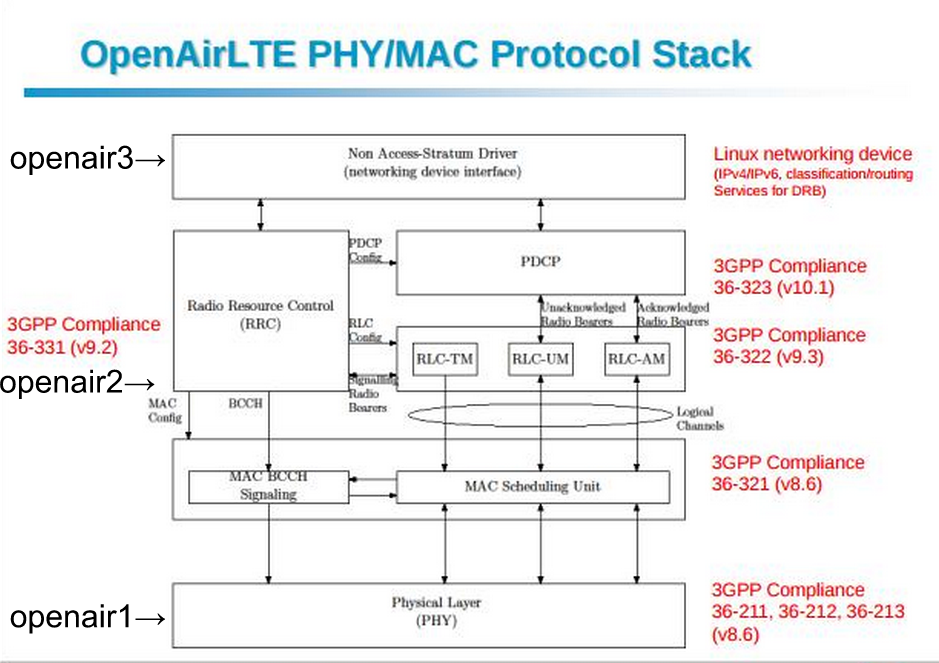 |
OpenAir1 Code
- Open-source real-time and offline Software
- Baseband DSP SIMD-x86 routines for implementing LTE UE’s and eNB’s
- Simulation TestBenches for all LTE PHY/transport channels
Sensing Localization TechniquesPHY modeling toolsPropagating Measurement and ModelingBasic DSP Routines for implementing LTE specifications
- Sounding Software, Physical (PHY) Abstraction Software, and Channel Simulation
Sound Software - Eurecom’s Multi-Input Multi-Output (MIMO) OpenAir Sounder (EMOS)allows multiuser MIMO channel measurements in real time and store measurements from both user equipment(UE) and evolved NodeB(eNB)PHY Abstraction Softwarecontains all real-time/simulation signal processing, unitary TestBenches for the different channel coders and decoders, and modulation/demodulation (includes FFT/SC-FDMA front-end processing)Channel Simulation Softwarecontains simulation routines to test PHY, and TestBenches for unitary simulation of physical channels, and full system simulation, such as PHY, MAC (medium access control), RLC (radio link control), RRC (radio resource control), PDCP (packet data convergence protocol)
OpenAir2 Code
- Open-source real-time and offline Software
- Contains LTE MAC (36-213), RLC (36-322), PDCP (36-323), and two RRC implementations
LLCestablishes/controls logical links between local devices on a networkMACcontrols access to the network medium to avoid conflictsData Framingis responsible for final encapsulation of messages into framesAddressinglabels information with a particular destination locationError Detection and Handling
- S1 interfaces for user and control planes of the eNB, X2 Application Protocol (X2AP), and OAI network driver
OpenAir3 Code
- Open-source Linux Software suite for cellular and MESH networks
- Provides scripts and adaptations for the Linux networking suite
- Contains OAI-MME (Mobility Management Entity), which is responsible for authentication of the mobile devices
Network Access Controlmanages authorization for UEs, allow to gain IP connectivityRadio Resource Managementdecides radio resource management strategy (RRM)Mobility Managementprovides seamless inter-working with multiple use cases such as Inter-eNBRoaming Managementsupports outbound/inbound roaming subscriberUE Reach-abilitymanages communication with the UE and HSSTracking Area Managementallocates tracking area identity list to UELawful InterceptLoad Balancing Between S-GWs
OpenAir0 Code
- Open-source real-time Hardware & Software for different Xilinx targets
OpenAirCN Code
- 3GPP-EPC implementation
- Small-scale 3GPP-EPC implementation
- Includes MME, P and S-Gateway, and HSS components
Targets Code
- Top-level target designs for use with and without Hardware in emulated or real-time modes
Analyzing Tools
Spectrum Analyzer
| Category | Hardware Spectrum Analyzer – Tektronix SA2600 | Software Spectrum Analyzer – RTLSDR Scanner |
|---|---|---|
Wire Measurement must be connect with 30dB attenuator in order to avoid saturation
| PROS user-friendly, convenient, remote access, software-based spectrum analyzer
| |
Wireless Measurement requires much higher gain than using wire
| CONS Realtek 2832 EZCap can’t tune to frequencies higher than 1.8GHz
| |
| Graphs | 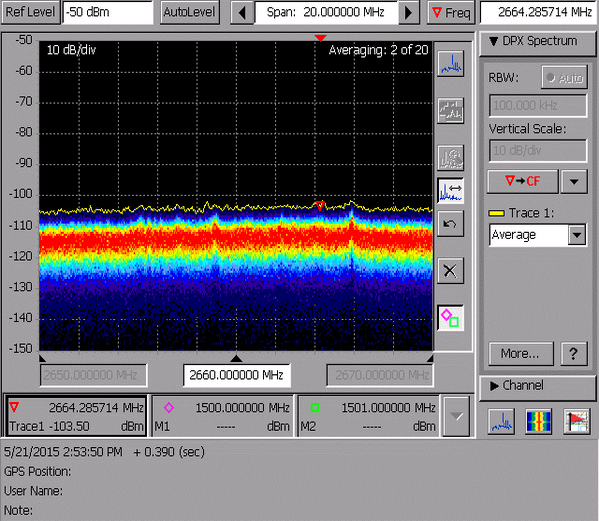
| 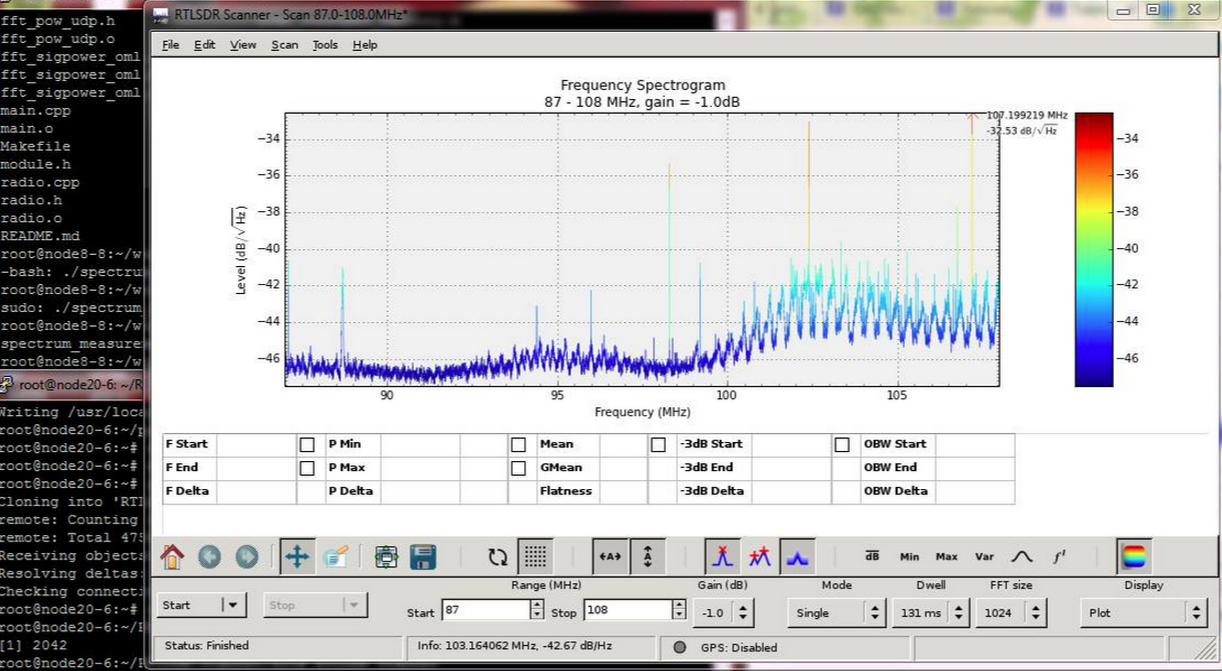
|
GNU Radio
GNU Radio is an important software-based tool, being used to obtain the FFT Plot, the Constellation Plot, and the Waterfall Plot. How to use GNU Radio
Signal-to-Noise Ratio (SNR)
There are 2 methods to approximate the SNR:
Method 1Estimate the noise power by measuring the received signal power when transmitter is turned off.
Method 2Estimate the noise power by calculating the received signal variance.
MATLAB code to measure SNR:
Experiments 1: Transmit and Receive LTE Signal
The experiment is simulated in Sandbox 1 with USRP Hardware Driver (UHD) using OAI software.
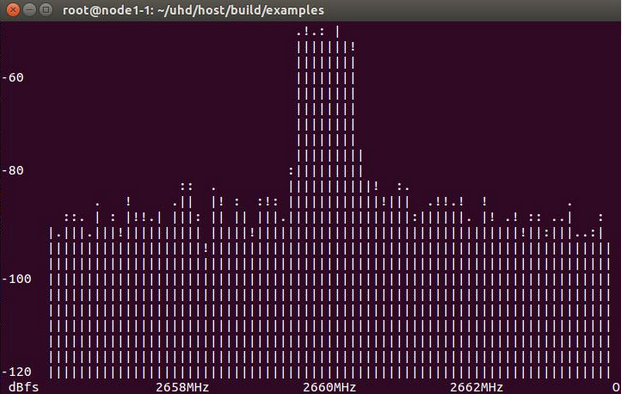 |
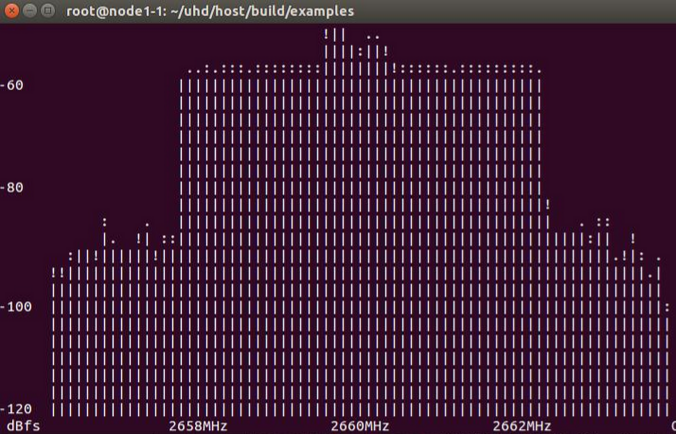 |
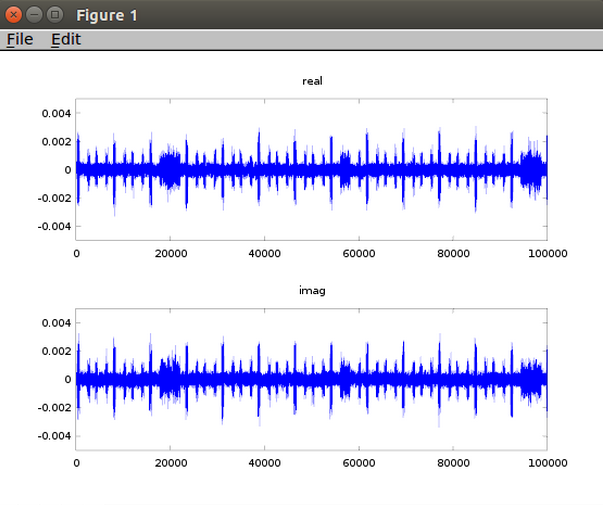 |
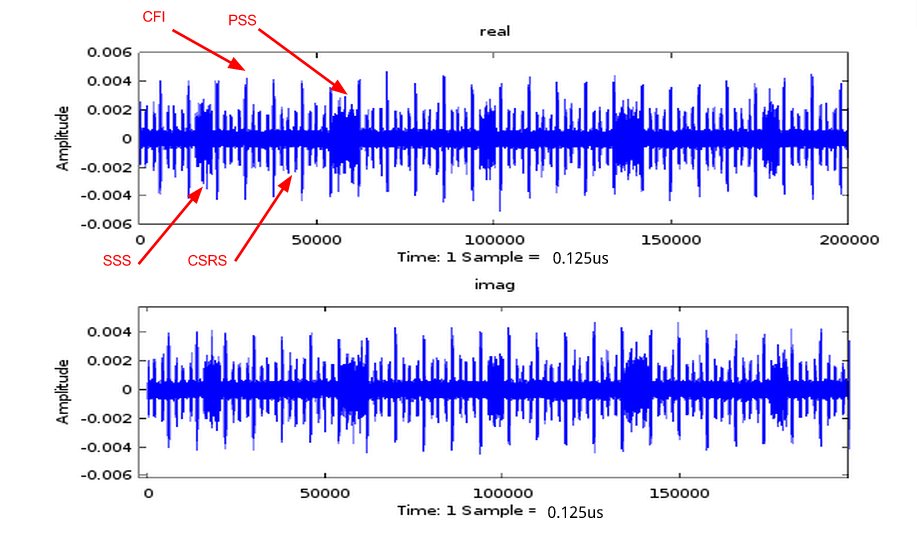 |
Note:
- PSS Primary Synchronization Signal
- SSS Secondary Synchronization Signal
- CFI
- CSRS
Experiment 2: The Waterfall Plot
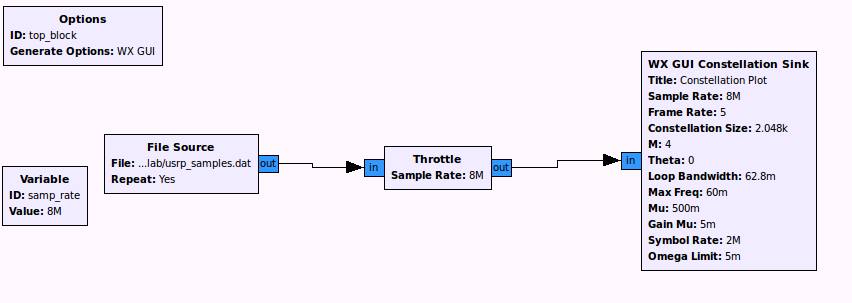 |
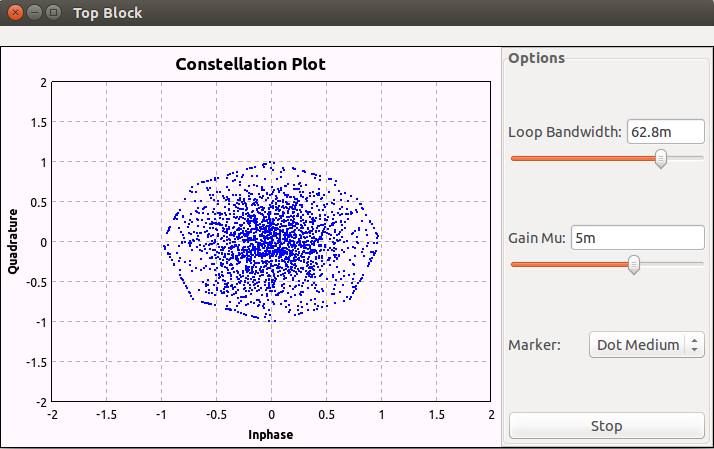 |
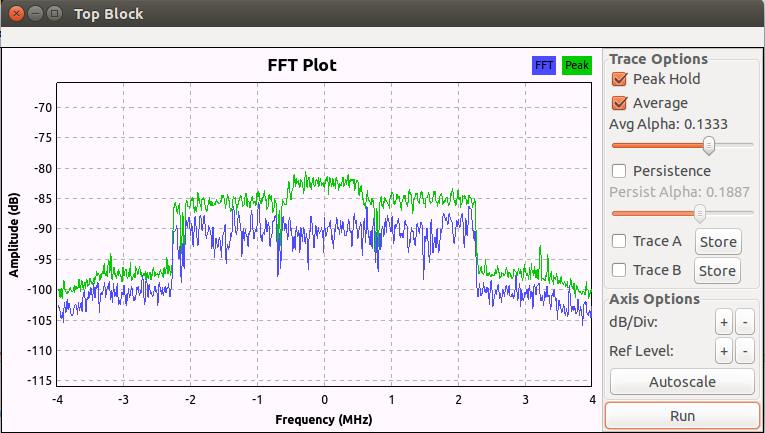 |
 |
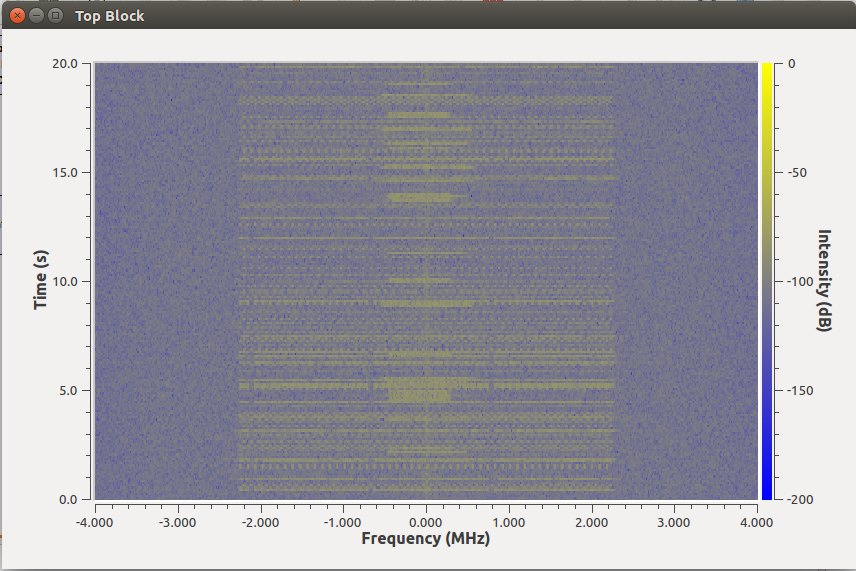 |
Experiment 3: Varying Bandwidths
Experiment 4: TDD with Varying Bandwidths
Members
*Led by Dola Saha and Prof. Ivan Seskar
Cat Le, Electrical and Computer Engineering, Rutgers University
Demetrios Lambropoulos, Electrical and Computer Engineering, Rutgers University
Steven Cheng, Rutgers University
Materials
Presentation: Week 7 OpenAirInterface
Resources
LTE Unlicensed Augmenting Mobile Data Capacity But Coexistence Needs Consideration
U-LTE: Unlicensed Spectrum Utilization of LTE
Extending LTE Advanced to Unlicensed Spectrum
The Prospect Of LTE And Wi-Fi Sharing Unlicensed Spectrum
Coexistence of LTE and WiFi Heterogeneous Networks via Inter Network Coordination
Attachments (51)
-
Week_2.pdf
(184.7 KB
) - added by 10 years ago.
Week 2
-
Week_1.pdf
(77.6 KB
) - added by 10 years ago.
Week 1
-
Week_3.pdf
(747.7 KB
) - added by 10 years ago.
Week 3
-
Week_4.pdf
(101.0 KB
) - added by 10 years ago.
Week 4
-
Week_5.pdf
(171.7 KB
) - added by 10 years ago.
Week 5
-
Week_6.pdf
(164.9 KB
) - added by 10 years ago.
Week 6
-
Week_6.2.pdf
(164.9 KB
) - added by 10 years ago.
Week 6
-
Week_7.pdf
(380.9 KB
) - added by 10 years ago.
Week 7
-
OpenAirInterface.pdf
(129.6 KB
) - added by 10 years ago.
Week 7: OpenAirInterface
-
Week_8.pdf
(160.9 KB
) - added by 10 years ago.
Week 8
- OpenAirInterface.png (429.3 KB ) - added by 10 years ago.
- Exp1.1.png (322.8 KB ) - added by 10 years ago.
- Exp1.2.png (423.2 KB ) - added by 10 years ago.
- Exp1.3.png (101.2 KB ) - added by 10 years ago.
- Tektronix.png (425.1 KB ) - added by 10 years ago.
- RTLSDR.png (740.7 KB ) - added by 10 years ago.
-
Necessary_Commands_Links_GNU.docx.pdf
(581.3 KB
) - added by 10 years ago.
GNU Radio Command
-
Sagari_phdForumMobiSys (1).pdf
(202.7 KB
) - added by 10 years ago.
Coexistence of LTE and WiFi Heterogeneous Networks via Inter Network Coordination
- Exp1.4.jpg (34.3 KB ) - added by 10 years ago.
- Exp2.1.jpg (21.9 KB ) - added by 10 years ago.
- Exp2.2.jpg (43.9 KB ) - added by 10 years ago.
- Exp2.3.jpg (51.6 KB ) - added by 10 years ago.
- Exp2.4.jpg (66.2 KB ) - added by 10 years ago.
- Exp2.5.jpg (88.0 KB ) - added by 10 years ago.
-
Week_9.pdf
(565.7 KB
) - added by 10 years ago.
Week 9
- Exp1.4.png (172.0 KB ) - added by 10 years ago.
-
Week_10.pdf
(298.0 KB
) - added by 10 years ago.
Week 10
- SNR.png (35.3 KB ) - added by 10 years ago.
- Tektronix(1).png (335.0 KB ) - added by 10 years ago.
- RTLSDR(1).png (465.6 KB ) - added by 10 years ago.
- Exp2.6.jpg (32.1 KB ) - added by 10 years ago.
- Exp2.7.jpg (30.7 KB ) - added by 10 years ago.
- catle.jpg (391.7 KB ) - added by 10 years ago.
- SNR.2.png (30.1 KB ) - added by 10 years ago.
-
Week_11.pdf
(315.5 KB
) - added by 10 years ago.
Week 11
- eNB-GUI.png (20.6 KB ) - added by 10 years ago.
- UE-GUI.png (17.7 KB ) - added by 10 years ago.
- LTE_BW_1.4.png (13.2 KB ) - added by 10 years ago.
- LTE_BW_5.png (14.7 KB ) - added by 10 years ago.
- LTE_BW_10.png (14.2 KB ) - added by 10 years ago.
- OpenAirInterface2.pdf (136.0 KB ) - added by 10 years ago.
- LTE_TDD_eNB_Scope.png (18.5 KB ) - added by 10 years ago.
- LTE_TDD_UE_Scope.png (17.2 KB ) - added by 10 years ago.
- TDD_IQ_1.4MHz.png (16.0 KB ) - added by 10 years ago.
- TDD_IQ_5MHz.png (18.0 KB ) - added by 10 years ago.
- TDD_IQ_10MHz.png (17.4 KB ) - added by 10 years ago.
- TDD_IQ_20MHz.png (18.1 KB ) - added by 10 years ago.
- TDD_LTE_QT_WF.png (192.1 KB ) - added by 10 years ago.
-
WINLAB Poster.jpg
(1011.7 KB
) - added by 10 years ago.
Poster
- Dem.jpg (64.2 KB ) - added by 10 years ago.
- Steven.jpg (194.4 KB ) - added by 10 years ago.

